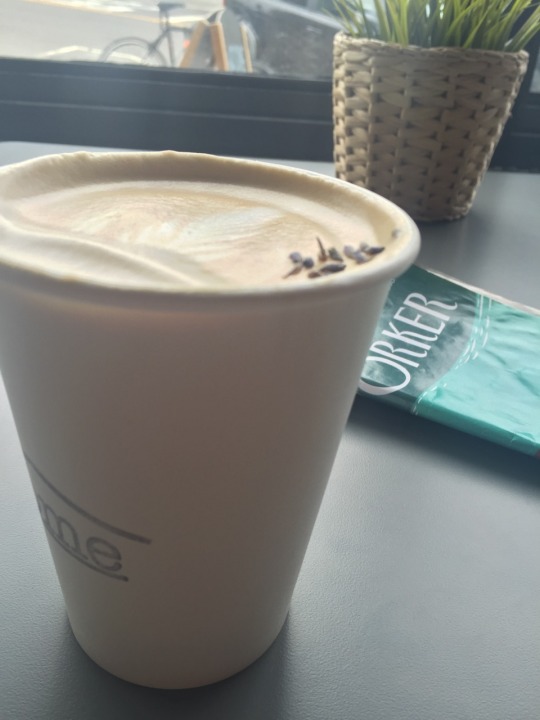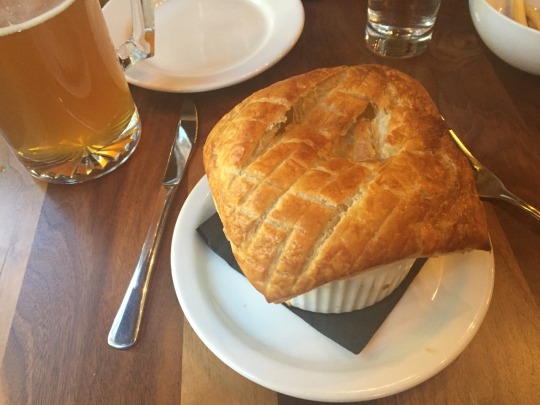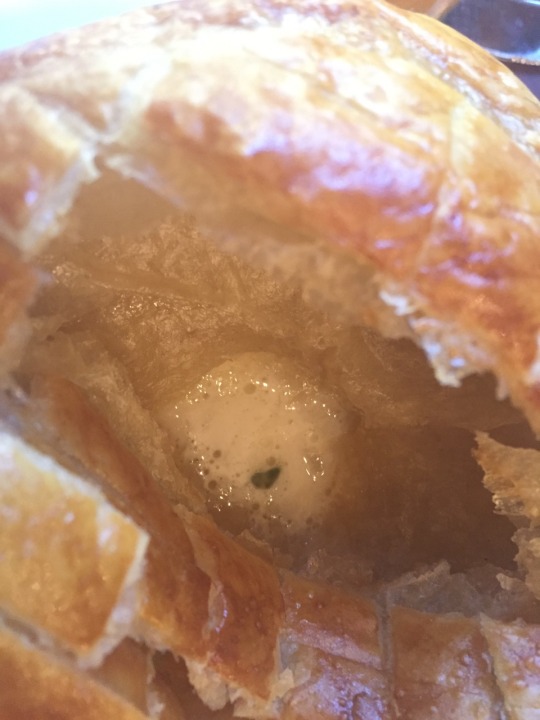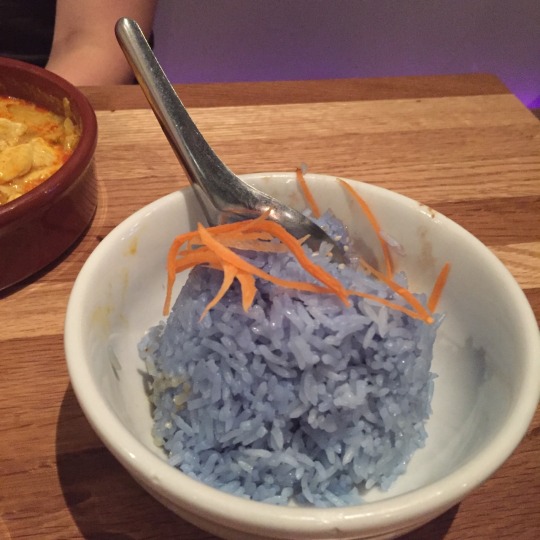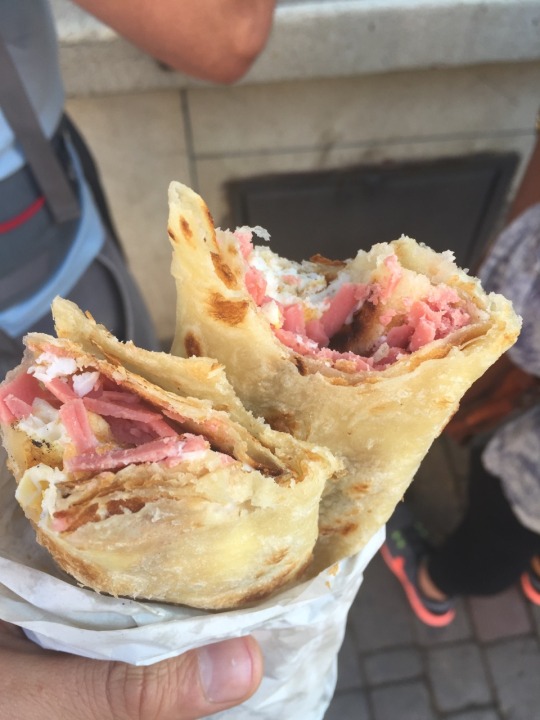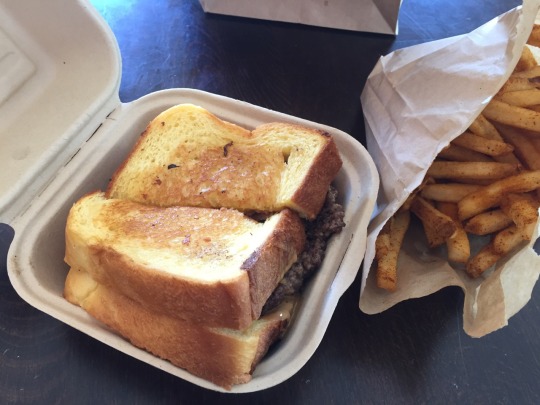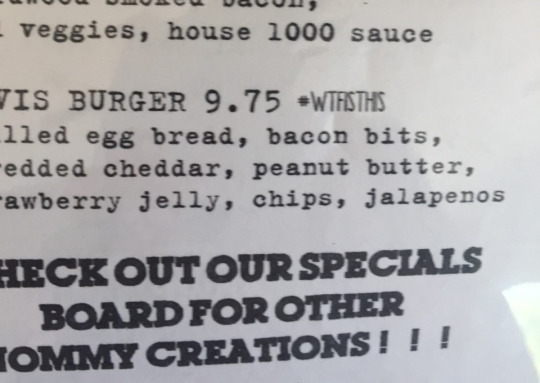(From top) Crab, trout roe, avocado, and apricot cream ‘pate’ | tomato bread | cod croquettes with honey foam | Catalan monkfish with romesco | lobster with chicken broth, mango, and anise | hazelnut coulant with mango sorbet | more hazelnut coulant (for good measure), Compartir, Cadaques, Spain.
Food has a unique power to build anticipation. Sometimes which food hardly matters—we’re so hungry that the expectation of any food gets us salivating. Ending the day after a long hike with just enough trail mix to sustain our blood sugar, we’ll often take anything, the simpler and hardier the better.
When traveling, on the other hand, it’s easier to anticipate a single, specific meal, all the better if it has an aura of luxury or idiosyncrasy. When we travel, we spend the day exercising our ‘taste’ in the first place—appreciating works of art at a museum, appreciating the sights and architecture of a city, appreciating local culture. Our metaphorical taste buds grow well-honed, our physical ones ready for the promise of an exceptionally good meal.
Of course, this kind of anticipation requires either advance planning or a serendipitous guide. While my parents would plan family trips down to the lunch and dinner (sometimes plan the trip around them), I’m lucky if I have all my accommodations reserved the moment my plane touches down.
That leaves outside help. Lean on locals, this goes without saying. But often it’s up to chance whether those locals really, truly know the quality of their local food. (El Farolito is the most ‘local’ restaurant in the Mission, but that doesn’t mean it’s the choice for a traveler with limited time.)
I spent a day in heavy anticipation of Compartir, a recommendation of fellow travelers during a scuba diving excursion in the Cap de Creus. It came unexpected—out of a calm casual conversation about their travels in Cadaques, they grew suddenly animated, like they needed to share this experience. ”Best food experience I ever had,” or some variant thereof may have passed their lips, but “former elBulli employees” and “molecular gastronomy” sold me. The restaurant was started by three elBulli sous chefs, elBulli being the Catalonian Michelin 3-star restaurant judged by Restaurant magazine to be the world’s Number One restaurant a record five times.
Upon further investigation, Compartir was itself ranked the number one restaurant in Cadaques on Trip Advisor, a less prestigious if far more accessible honor. (And yes, I’m someone who can’t help but corroborate an individual recommendation against an ‘objective’ review site. Life’s too short for bad food.)
It felt like striking gold—a well-received restaurant with a strong culinary pedigree recommended serendipitously at the end of a long, fulfilling day. And it boasted a menu with dishes no more expensive than your typical San Francisco mid-ranger.
While not reaching the molecular gastronomic complexity of elBulli, Compartir has plenty of tricks up its sleeve. The first dish of crab, trout roe, avocado, and apricot cream ‘pate’, served in a studded porcelain gourd and served with a thin toast, was what you’d imagine a gem mine to be like as a child—studded with color, almost inexhaustibly rich. You pass through a cluster of salty roe and puffs of apricot cream to unearth layers of avocado and crab meat, all of which soaks up the oil and the salt from the tiny explosions of the roe. The porcelain gourd gives it a somehow living quality, like this is some magical shellfish you just popped open (my imagination might be getting the better of me, but doesn’t that roe cluster look like a delicious sea creature brain?)
The cod croquettes came accompanied by the most discernably molecular gastronomic touch to the meal: honey foam. (Microgastronomy is most famous for its transmogrifications of foods from one form to another—a solid to a liquid, a scent to a solid.) A relatively simple touch, the foam was, however, perfect with the cod balls, giving it an almost kettlecorn-like quality: just the right level of sweetness to balance the salty softness.
While tasty, my memories of my Catalan monkfish entree were outshadowed a little by conversation and a lot by my jealousy of my friend’s lobster dish. I spent more time plotting how to get more of his than I did appreciate my own, which had a California cuisine-like way of emphasizing the monkfish’s light, plump flavor with subtle accoutrements—crushed almonds, a sort of squash puree, olive oil, parsley, and scallions. The lobster was a fascinating kitchen sink, ingredients pell-melling around but still keeping themselves confined to the limits of the shell. It would be entirely deserving of the sobriquet ‘Lobster a la Picasso’ for its angular, cubist presentation. (It looks like like one of those guitars, doesn’t it?) Flavor-wise, imagine lobster reimagined as chicken stew—topped with chicken broth and stew-cut carrots and celery.
And then, well, nothing could hold a candle to the hazelnut coulant which ended my meal. The coulant (a meltier souffle) cracks open to release a molten hazelnut essence. If peanut butter prays to any god, this is it. The mango sorbet guarantees multiple harmonies: the cool and the tart matching the warm and the rich.
Flavor: 5 / 5. I would give it 5 / 5 for the pate dish or hazelnut coulant alone. The latter was probably the most memorable dessert I’ve eaten all year. Despite my food envy, my Catalan monkfish was delicious and entirely deserving. But do yourself a favor and order that lobster 😉
Fun: 5 / 5. While the ingredient combinations and the touches of molecular gastronomy were among the more creative I’d seen, the fun chiefly came in the presentation. Just look at those dishes! Food done well is a visual art, too—we call it ‘food porn’ for a reason.
Funkiness: 2 / 5. Outside of the salmon roe, there wasn’t too much about this that rocked my weirdness world. The honey foam was certainly novel, but not revolutionary. But it’s a fantastic way to dip your toe in the water of molecular gastronomy without breaking the bank.







